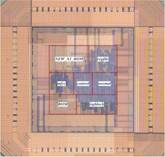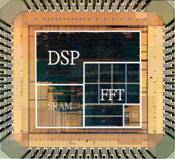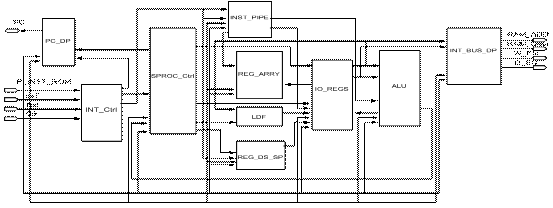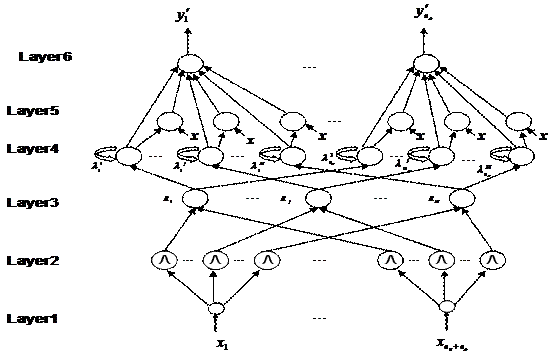[Avoid demo│避障展示]
DSP & IC Design Lab was founded in 2004, National Chi Nan University. To be a world leading research institution, we emphasize "focus and simplicity". The research topics include W5 Processor (CPU), Fuzzy Neural Network (FNN), and Digital Signal Processing (DSP). Team members include 邱智煜(博一),吳國榮(碩二),林維屏(碩二),黃昱睿(碩二),林群澤(碩一),莊孟諭(碩一). In our team, you have to remember one rule: "Never give up│永不放棄".

Wu 5th processor with four-pipeline-architecture is proposed by Prof. Gin-Der Wu. It is abbreviated as "W5". W5 supports 4 timer-interrupts, 4 external-interrupts, 4 flags (negative, carry, arithmetic zero, bool zero), 16 bits I/O x 4 internal bidirectional ports, 16 bits I/O x 4 external bidirectional ports, 16 PWM-controllers, 32 registers, 32k-bytes program-ROM, 128k-bytes data-RAM, and 128k-bytes data-ROM. Its assembler supports 24-bits machine-code and 8-layers loops. All conflicts are solved by hardware (“NOP” is not required).



W5 has been successfully applied to digital signal processing, fuzzy neural networks, and control system. Based on W5 processor, swarm robots can perform different tasks automatically by different programs.

Digital signal processing is the mathematical manipulation of an information signal. It is characterized by the representation of discrete time, discrete frequency, or other discrete domain signals by a sequence of numbers. To consider the application, speech recognition and image recognition are two important research topics.


Fuzzy Neural Network attempts to exploit human-like knowledge that consists of a group of fuzzy IF–THEN rules. To create fuzzy IF-THEN rules automatically, gradient-descent method is adopted to train parameters of fuzzy rules. Since the training of fuzzy rules can be regarded as the clustering of input data, the method of clustering can be also adopted for fuzzy rules generation. FNN integrates the capability of fuzzy reasoning in handling uncertain information and the capability of neural networks in learning from processes. They have been successfully applied in areas such as pattern classification, control, and signal processing.
*【Download】Fuzzy System - Chapter 1 : Basics of Fuzzy Sets
*【Download】Fuzzy System - Chapter 2 : Fuzzy Relations
*【Download】Fuzzy System - Chapter 3 : Fuzzy Arithmetic
*【Download】Fuzzy System - Chapter 4 : Fuzzy Logic and Approximate Reasoning
*【Download】Fuzzy System - Chapter 5 : Fuzzy Logic Control System
*【Download】Fuzzy System - Chapter 6 : Fuzzy Clustering
*【Download】Fuzzy System - Chapter 7 : Back Propagation Neural Network
*【Download】Fuzzy System - Chapter 8 : Evolutionary Algorithms